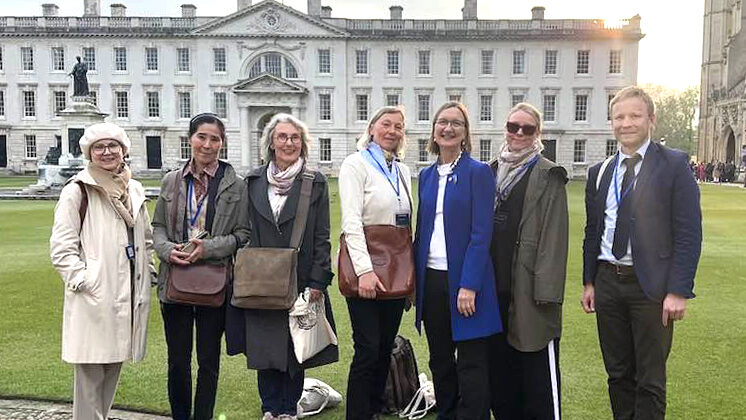declared its independence during the attempted coup [by hard-line communists in Moscow] and was granted recognition by Russian president Boris Jeltsin, the Finnish security police (SUPO), through police contacts was well informed of the situation of the newly forming republic and provided special assistance, until a special police unit was created in Estonia. The Finnish security police knew that during the Soviet era the KGB had 1053 official positions in Estonia (not counting various levels of operatives not officially listed). When comparing populations this would be 18 times greater than in Finland
” A separate item was the question of an individual, who, as a protégé of prime minister Edgar Savisaar rose to a high official position. He was not granted a visa to enter Finland, an important country to Estonia. He was in co-operation with the KGB. His ‘persona non grata' status from Finland was enforced starting in 1990 and SUPO refused to recind it.
Savisaar's security chief in the early 1990s and his current vice-major of Tallinn, Kalle Klandorf, has tried to discredit the book. He has said that it's difficult to comment on a protégé of Savisaar's from that era. He added that there were many involved with the government whose reputations were targets of political compromise. This was in response to references in the book that Savisaar was promoting individuals with dubious backgrounds.
He elaborated: “I'm skeptical about the book, because it starts from 1949. Before that Finland had an established security police, the Valtiollinen Poliisi, who co-operated with the KGB, especially in expelling political refugees from Finland. During those years the agency had communists, including individuals who had been convicted of treason.
Klandorf thinks that SUPO is closely involved so that their claims cannot be taken seriously. He said their relationship with Russia is not denied in the book, even after 1945 and lasted till 1990. He refers back to stories from the early 1990s, when then foreign minister Lennart Meri was in Finland during the August 1991 attempted coup in Moscow. Klandorf said the Finnish security police had him under surveillance to expel him at the request of Moscow if the coup succeeded. He added that this was only rumor. It's possible that the Soviets thought that way. According to Kalndorf Finland has co-operated with the KGB in the past. Klandorf's unsubstianted claims has left many in Estonia wondering whether the individual referred to in SUPO's book is actually Klandorf himself.
In spite of Klandorf ‘s suggestions that SUPO's close partner was the Soviet Union's Sate Security Committee, the KGB, many experts claim otherwise. SUPO's main targets were Soviet special services. SUPO also had a special relationship with USA's CIA. Exposed foreign agents were mainly Soviet and those expelled, with quiet discretion, were mostly Soviet. Sixty years ago when SUPO was established, it actually kept track of Finnish Communists and played a classical cat and mouse game with the KGB. The KGB was ubiquitous throughout Finland. Final approval for individual deportations was the responsibility of the Finnish president. It is said the president Urho Kekkonen was even more severe than SUPO. When he received a proposal to have someone deported, he would often say, “Why not the other one too?”
While it's been accepted that SUPO's battle with the KGB was generally successful, the KGB went to great lengths in finding legends (fictional backgrounds) for operatives sent to Finland. By getting forged documentation from Finnish birth registrations in churches (from church archives in Soviet-occupied Finnish territory), it was able to create new Finnish citizens and their children a well. They were difficult but successful assignments for SUPO to investigate and expose. It was more than evident to all that the Finnish security service leaned definitely to the West, motivated by more than just friendship.
SIDEBAR: One of the first to establish a working relationship with the Finnish security police in the early 1990s was police prefect Herman Simm, who, in 2009 as the defence ministry's security chief, was exposed and convicted of treason for working for Russian intelligence. In 1992 he went to Finland to discuss urgent issues such as the discovery of two secret depots of tanks near Tallinn. This coincided with Russian agitation of the population of Narva to break off from Estonia. A coalition willing to join an armed fight to secede from Estonia was reason for serious concern. It consisted of a pro-Soviet organization, Interrinne, plus fifty Russian Afghanistan veterans who had been co-opted, and fifty ‘freedom fighters' from the Russian-controlled Transnistria region who were involved in the territory's armed break-away from western-oriented Moldova. It's generally agreed that Simm was in Finland seeking the country's advice and help and had yet not been activated by Moscow.
Laas Leivat




